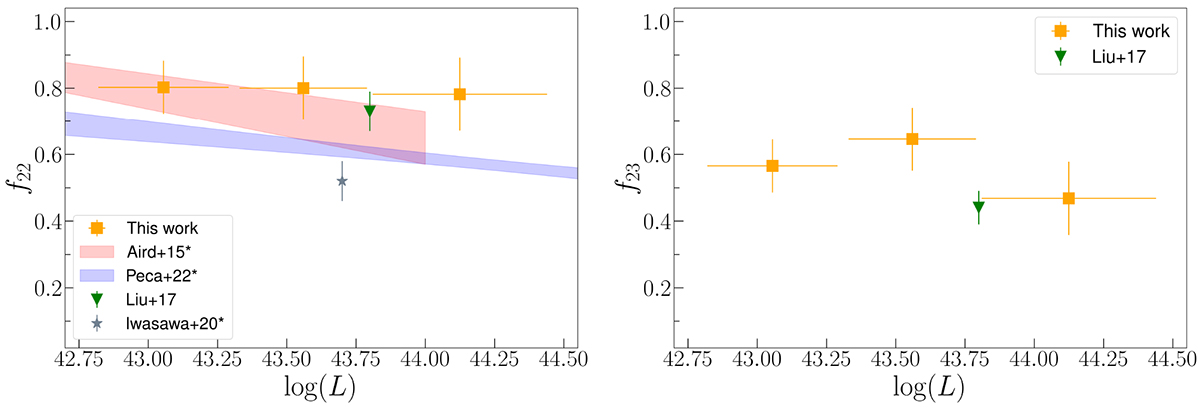Fig. 11.

Download original image
Fraction of z ∼ 1.2 obscured AGN, corrected for completeness, as a function of intrinsic 2–10 keV luminosity. The orange squares show the results from this work. Left: obscured fraction derived using NH > 1022 cm−2 as the threshold (f22). The results from this work are compared with those of Aird et al. (2015, red shaded), Liu et al. (2017, green triangle), Iwasawa et al. (2020, gray star) and Peca et al. (2023, blue shade). The Aird et al. (2015), Iwasawa et al. (2020) and Peca et al. (2023) obscured fraction consider column densities up to 1024 cm−2. Aird et al. (2015) data are centered at z ∼ 1; the Iwasawa et al. (2020) data are centered at z ∼ 1.35. Given the different definitions of f22 and the redshift differences, some scatter among the results is expected. Right: obscured fraction derived using NH > 1023 cm−2 as the threshold (f23). The results of this work are compared with those of Liu et al. (2017, in green). The f23 obscured fraction at log(L)∼44.1 is in good agreement with that of Liu et al. (2017) at log(L)∼43.8.
Current usage metrics show cumulative count of Article Views (full-text article views including HTML views, PDF and ePub downloads, according to the available data) and Abstracts Views on Vision4Press platform.
Data correspond to usage on the plateform after 2015. The current usage metrics is available 48-96 hours after online publication and is updated daily on week days.
Initial download of the metrics may take a while.


